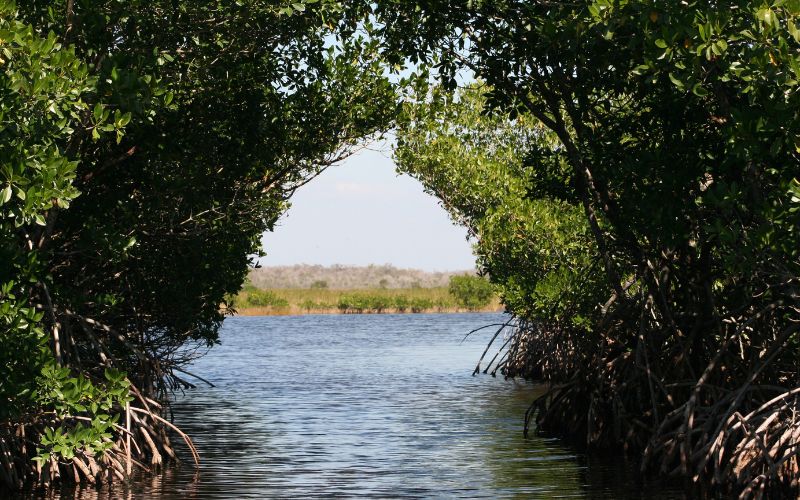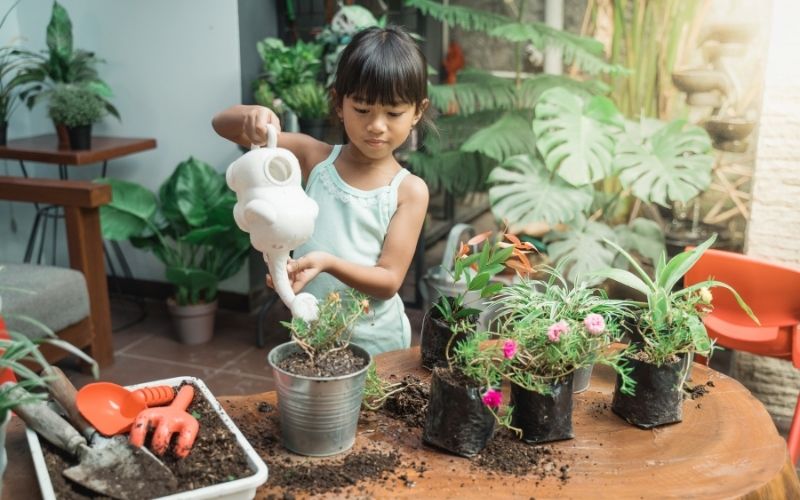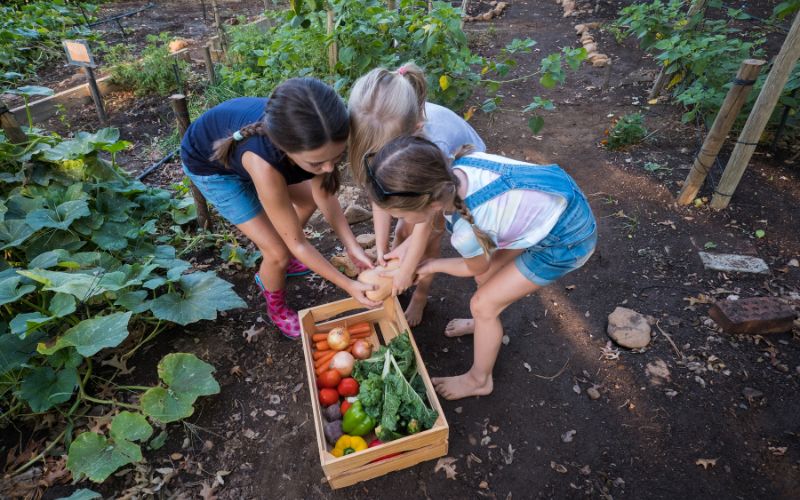Mangrove Unit Study Ideas for Homeschoolers
Are you looking for an exciting and engaging way to teach your homeschoolers about the importance of mangrove trees? Look no further! A mangrove unit study is a perfect way to introduce your children to the unique ecosystem and habitat of these amazing trees and is a great addition to your ocean-themed unit study!

Mangrove trees are found in tropical and subtropical areas and are vital to the environment. They serve as a natural buffer against storms and hurricanes, protect against erosion, and provide a home for a variety of animals and plants. By incorporating a unit study on mangrove trees, your children will learn about the importance of preserving these habitats and the impact they have on our planet.
A unit study on mangrove trees can be tailored to fit the needs of children of all ages. From learning about the different types of mangrove trees and their adaptations to exploring the animals that call this habitat home, your children will be engaged in hands-on learning activities that will leave a lasting impression. So why not dive into the world of mangroves and explore the wonders of this unique ecosystem with your homeschoolers today?
What is a Mangrove?
Mangroves are unique trees or bushes that grow in dense clusters along seashores and riverbanks. They have a thick tangle of roots that sticks up through the mud. In this section, we will discuss the habitat, types of mangroves, and importance of mangroves.
Habitat
Mangroves grow in areas that are flooded by tides. They exist in a constantly changing environment. Mangroves are found in tropical and subtropical regions, including Florida, the Caribbean, and parts of Asia and Africa. They thrive in saline or brackish water, where most other plants cannot survive.
Types of Mangroves
There are many types of mangroves, but the most common are the red mangrove, black mangrove, and white mangrove. Each type has unique adaptations to survive in their environment. For example, red mangroves have prop roots that help anchor them in the mud, while black mangroves have pneumatophores, which are specialized roots that allow them to breathe in the oxygen-poor mud.
Importance of Mangroves
Mangroves play a vital role in the environment. They provide a habitat for many animals, including fish, birds, and other wildlife. They also protect coastlines from erosion and storm surges. Mangroves are also important for the health of the ocean. They filter pollutants and excess nutrients from the water, helping to maintain a healthy ecosystem.
In conclusion, mangroves are fascinating trees that have adapted to survive in some of the harshest environments on Earth. They are an important part of the coastal environment, providing a habitat for many animals and protecting coastlines from erosion and storms. If you are studying science units related to habitats, environments, or animals, a mangrove unit study is a great way to learn about these unique trees and the important role they play in the ecosystem.

Why Study Mangroves?
If you’re looking for an exciting and enriching way of learning, a mangrove unit study might be just what you need! In this section, we’ll explore the benefits of unit studies, how mangroves can fit into your homeschooling journey, and some tips for planning your own mangrove unit study.
Benefits of Unit Studies
Unit studies are a fantastic way to dive deep into a particular topic while integrating multiple subjects at once. Instead of studying individual subjects in isolation, unit studies allow you to explore a topic from multiple angles, incorporating reading, writing, math, science, history, and more. By focusing on a single topic, students can develop a deeper understanding of the subject matter and make meaningful connections between different areas of study.
Mangroves and Homeschooling
Mangroves are a fascinating and unique habitat that can provide a wealth of learning opportunities for homeschoolers. By studying mangroves, students can explore topics such as:
- The science of mangrove ecosystems, including the plants and animals that call them home
- The history of mangroves and their importance to coastal communities
- The geography of mangrove habitats, including their distribution around the world
- The cultural significance of mangroves in different parts of the world
Mangroves can also be a great topic for hands-on activities, such as science experiments, field trips to local mangrove habitats, and nature journaling. By incorporating a variety of activities and resources, you can create a fun and engaging learning experience for your students.

How to Plan a Mangrove Unit Study
If you’re interested in planning a mangrove unit study, there are a few things to keep in mind. Here are some tips to get you started:
- Choose your resources: Start by gathering books, videos, and other resources about mangroves. Look for living books, poetry, and literature-based resources to make the topic come alive for your students.
- Plan your activities: Think about hands-on activities, field trips, and science experiments that can help bring the topic to life. Consider using printables, notebooking pages, and timelines to help your students organize their learning.
- Incorporate multiple subjects: Look for ways to integrate different subjects into your study. For example, you might use math to explore the size and scale of mangrove habitats, or incorporate writing assignments and spelling lists related to the topic.
- Follow your students’ interests: Remember that a unit study is a child-led learning experience. Follow your students’ curiosity and interests, and be open to exploring rabbit trails that emerge along the way.
By planning a mangrove unit study, you can create an exciting and enriching learning adventure for your homeschoolers. Whether you’re exploring the everglades national park in Florida or learning about mangroves from afar, a mangrove unit study can be a fantastic way to inspire a love of learning and exploration in your students.
Mangrove Unit Study Activities
When it comes to teaching your children about mangroves, there are a variety of activities that you can incorporate into your homeschool curriculum. From reading and writing to science experiments and field trips, there are endless opportunities to explore this unique ecosystem. Here are some ideas to get you started:
Reading
Reading is a great way to introduce your children to mangroves and their importance. Consider reading books such as “A Mangrove Forest Food Chain: A Who-Eats-What Adventure in Asia” by Rebecca Hogue Wojahn or “Lost in the Mangroves (The Adventures of Wren and Frog)” by Grant Allison. You can also find articles and websites online that provide information about mangroves.
More Mangrove Books for Kids:
Mangrove Vocabulary Words
Here is a list of vocabulary words suitable for a mangrove unit study:
- Mangrove: A tree or shrub that grows in coastal saline or brackish water, characterized by its ability to tolerate high salt content.
- Brackish: Water that is a mixture of freshwater and saltwater, found in estuaries where rivers meet the sea.
- Prop Roots: Roots that grow vertically from the tree’s branches or trunk, providing stability and support in the muddy soil of the mangrove habitat.
- Pneumatophores: Specialized aerial roots found in some mangrove species that project above the soil surface, allowing the exchange of gases in oxygen-poor environments.
- Salinity: The measure of salt content in water, which can vary in different mangrove habitats.
- Estuary: A partially enclosed coastal body of water where freshwater from rivers mixes with seawater, creating a unique and productive ecosystem.
- Tidal Influence: The effect of the rise and fall of tides on mangrove habitats, which brings in nutrients and affects water levels and salinity.
- Adaptation: Specialized features or behaviors that help organisms survive and thrive in specific environments, such as the unique adaptations of mangroves to saltwater and muddy conditions.
- Biodiversity: The variety of species found within a particular ecosystem, highlighting the rich diversity of plant and animal life in mangrove habitats.
- Ecosystem Services: The benefits that mangroves provide to the environment and human communities, such as shoreline protection, water filtration, and habitat for numerous species.
- Red Mangrove: A species of mangrove characterized by its stilt-like prop roots and the ability to filter salt from seawater through its roots.
- Black Mangrove: A species of mangrove that grows in the highest areas of the mangrove forest, with distinctive pneumatophores and salt-excreting glands on its leaves.
- White Mangrove: A species of mangrove that typically grows in the upland zones of mangrove habitats, with small prop roots and salt-excreting glands on its leaves.
- Mangal: The term used to describe a mangrove forest or ecosystem.
- Leaf Litter: The accumulation of fallen leaves, twigs, and other organic matter on the forest floor, providing nutrients and habitat for various organisms.
- Mangrove Snapper: A common fish species found in mangrove habitats, known for its ability to navigate through the intricate root systems.
- Mangrove Swamps: Low-lying areas dominated by mangrove trees, characterized by waterlogged soils and abundant plant and animal life.
- Silt: Fine particles of soil or sediment that are suspended in water, often found in mangrove habitats due to tidal action.
- Mangrove Rehabilitation: Efforts to restore or protect degraded mangrove areas, aiming to enhance biodiversity, preserve ecosystem services, and mitigate the impacts of climate change.
- Avicennia: A genus of mangrove plants that includes several species found in different mangrove habitats worldwide.
Introduce these vocabulary words gradually throughout the mangrove unit study, reinforcing their understanding through discussions, field observations, and hands-on activities.
Math
Math can be incorporated into your mangrove unit study by having your children count the number of mangrove trees they see on a field trip or measuring the height of the trees. You can also have them calculate the distance between different mangrove forests or estimate the number of animals that live in a particular area.
Writing
Writing is a great way for your children to express what they have learned about mangroves. You can have them write a research paper, a poem, or a short story about mangroves. You can also have them write a letter to a local government official about the importance of protecting mangrove forests.
Science Ideas
There are many science ideas that you can incorporate into your mangrove unit study. You can have your children learn about the different types of mangroves and the animals that live in them. You can also have them learn about the importance of mangroves in protecting coastlines from storms and erosion.
- Explore the Mangroves & Native Animals Activity Sheet
- Fascinating Animals That Live In Mangrove Forests
- Animals in the Mangrove Ecosystem
Science Experiments
Science experiments are a great way to engage your children in hands-on learning about mangroves. You can have them conduct experiments to learn about the effects of saltwater on plant growth or the importance of mangroves in filtering pollutants from water.
Art and Crafts
Art and crafts are a fun way to explore mangroves and their unique characteristics. You can have your children create art projects such as paintings or collages of mangrove forests. You can also have them make crafts such as mangrove seed necklaces or mangrove leaf prints.
The Mangrove Art Gallery has lots of ideas to get your child started on their own Mangrove Art project. Use the video below to learn how to draw a red Mangrove tree.
Field Trips
Field trips are a great way to explore mangroves in person. You can take your children to a local mangrove forest or visit a science center that has exhibits about mangroves. You can also take a boat tour to see mangroves from a different perspective.
Incorporating these activities into your mangrove unit study can make learning about this unique ecosystem fun and engaging for your children.
If you live near the coast or plan on taking a vacation to the coast soon, check out different learning opportunities you can use to learn more about the Mangrove ecosystems in your area.

Mangrove Unit Study Resources
When it comes to teaching your homeschoolers about mangroves, there are many resources available to help make the learning process fun and engaging. Here are some resources that you can use to create a comprehensive mangrove unit study for your children.
- Mangrove Unit Study Ideas from Chick and Roo
- The Magic of Mangroves Secondary Lesson Plan
- Mangrove Lesson Plans
- National Park Lesson Plans on Mangroves
- Where Land Meets Sea
Printables
Printables are a great way to reinforce the concepts that your children are learning about mangroves. Some of the best mangrove printables include:
- Mangrove coloring pages
- Mangrove habitat diorama printables
- Mangrove animal fact sheets
- Mangrove Ecosystems Worksheet
- Water Based Biomes Worksheet
These printables are a great way to keep your children engaged and learning about mangroves.
Videos
Videos are a great way to bring the world of mangroves to life for your children. Some of the best mangrove videos include:
These videos provide a visual representation of mangroves and their importance to the environment, making it easier for your children to understand the concepts they are learning.
By using these resources, you can create a comprehensive mangrove unit study that will engage your children and help them learn about this unique and important ecosystem.
More Ocean Unit Study Ideas
- Ocean Themed Unit Study Ideas for Homeschoolers
- Dive into Creativity: Ocean-Themed Crafts for Kids
- Discover the Wonders of the Sea: Ocean Themed Books for Kids
Conclusion
Congratulations, you have completed your mangrove unit study! You have learned about the importance of mangroves in our ecosystems, the different types of mangroves, and the relationships among the organisms in the mangrove ecosystem.
During your study, you may have noticed the unique adaptations of mangroves that allow them to survive in harsh environments. For example, the roots of mangroves are able to absorb oxygen from the air and filter out salt, allowing them to grow in saltwater environments.
You have also learned about the threats to mangrove ecosystems, such as deforestation, pollution, and climate change. It is important to remember that we all have a role to play in protecting these valuable ecosystems.
As you move forward, continue to explore and learn about the natural world around you. Mangroves are just one small part of the complex web of life that surrounds us, and there is always more to discover.
Remember to take care of the environment and do your part to protect it. Whether it’s picking up litter or reducing your carbon footprint, every little bit helps. Keep up the great work, and happy learning!
Free Printable Unit Study Planner

How to Download
- Just fill out the form below and you’ll receive an email giving you instant access to this free printable.
- If you are already a subscriber, filling out the form won’t affect your subscription, but you will receive the link to get the printable!
Why should I subscribe?
- access to my subscriber exclusive resource library
- exclusive coupons and sales to my shop
- updates, freebies, and exclusive offers
- instant access to subscriber exclusive printables






